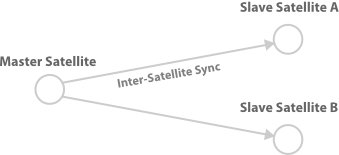Este conteúdo não está disponível no idioma selecionado.
9.3. Inter-Satellite Synchronization Use Cases
Example 9.4. Staging Satellite
Figure 9.1. Staging Satellite
Figure 9.2. Syncing from Red Hat Network Hosted and a Satellite Staging Server
- Run the
satellite-synccommand to synchronize data with rhn_parent (usually Red Hat Network Hosted):satellite-sync -c your-channel
satellite-sync -c your-channelCopy to Clipboard Copied! Toggle word wrap Toggle overflow - Run the following command to synchronize data from the staging server:
satellite-sync --iss-parent=staging-satellite.example.com -c custom-channel
satellite-sync --iss-parent=staging-satellite.example.com -c custom-channelCopy to Clipboard Copied! Toggle word wrap Toggle overflow
Example 9.5. Synchronized Slaves
Figure 9.3. Slave Satellites are maintained exactly as the master
Example 9.6. Slave Custom Content
Figure 9.4. Slave Satellites that retain their own custom content
Example 9.7. Bi-directional synchronization
satellite-sync is run will pull the content from the other Satellite server and the synchronized data will depend on the options run with satellite-sync. Without any options, the synchronization will attempt to update everything that was previously synchronized.
Figure 9.5. Bi-directional synchronization




